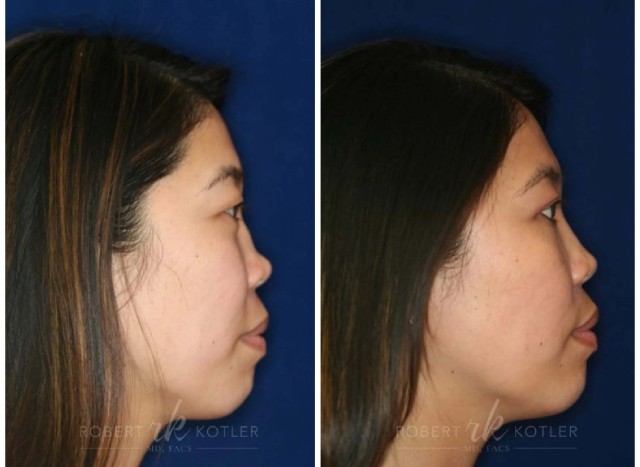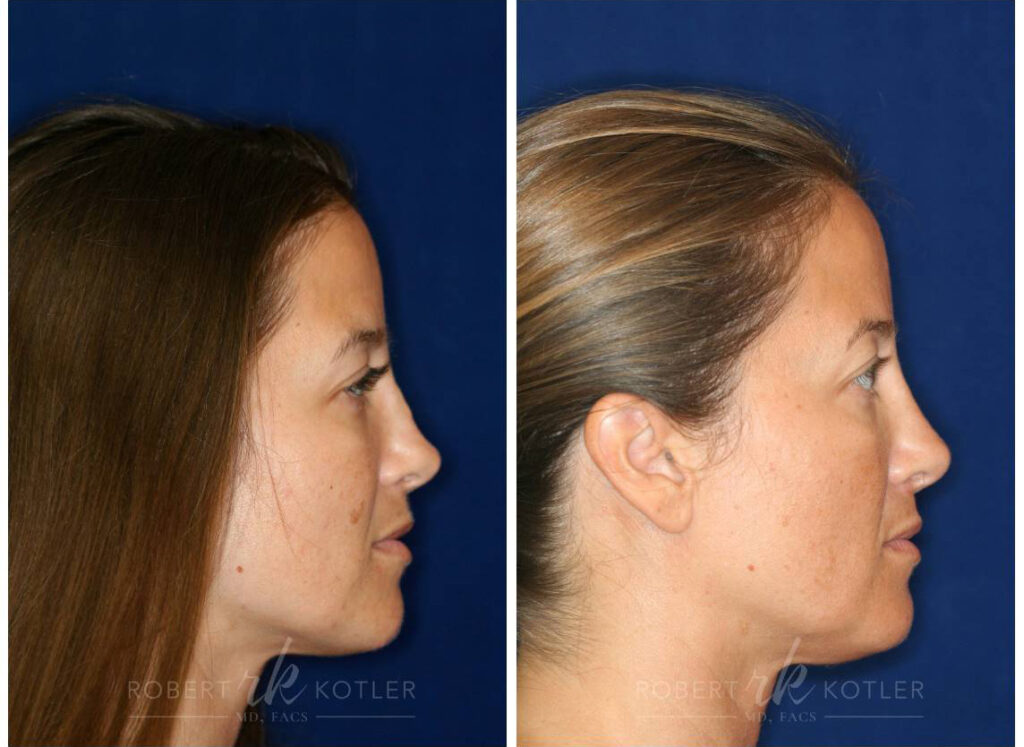What Is Silikon 1000?
Silikon 1000 (purified polydimethylsiloxane) is a trade name for clear, colorless, medical-grade liquid silicone. The product is manufactured for use as a permanent filler in appropriate areas. It has been used for acne scars with some success. It lasts longer than any of the collagen injectables.
It is FDA-approved and has over a 60-year track record of success. The original use for the product was to “push back” a detached retina. Generally, there are very few issues with the product when properly used.
What Is Silikon 1000 Used for?
Silikon 1000 is used as a cosmetic treatment. While other specialties, including podiatry, may use it to add padding to the sole of the foot where adequate padding tissue is absent, most of the use of the product focuses on use as a facial filler.
Some surgeons and board-certified dermatologists have used Silikon 1000 for acne scars and had reasonable success.
Those applications are very difficult. Lip augmentation has been another use. However, one must perform a Silikon 1000 treatment very carefully so there is minimal possibility of nodularity. As with other office injection treatments, there is no downtime.
What Is the Use of Silikon 1000 as a Cosmetic Treatment?
The primary use of silicone injections is to plump, fill, and lift depressions. That is why it has some benefits for acne scarring and has been used in the nose.
It is the ideal nose filler since the nose is a non-moving part. Therefore, no force is exerted against the product when placed underneath the skin adjacent to the underlying framework of bone and cartilage.
The microdroplet technique is the preferred technique when using silicone filler.
What Is the Silikon 1000 Procedure?
In the Silikon 1000 procedure, an in-office treatment, the filler is deposited under the skin into the thin fatty layer that separates the skin from the underlying cartilage using a very fine-gauge needle and the microdroplet technique.
This method allows the necessary plumping or filling to correct depressions, ruts, divots, and other imperfections typically following one or more rhinoplasties.
It also can be used to correct the consequences of injury to the nose. There are typically no side effects. Infection is almost unheard of.

Young Asian-American whose bridge, already low, collapsed from an injury. No surgery required.
How Does Silikon 1000 Work?

Rhinoplasty performed elsewhere. Substandard result. Permanent Non-surgical Revision Rhinoplasty. No surgery.
Silikon 1000 is an off-label use. However, this product is perfectly legitimate. It is used as a dermal filler and deposited underneath the skin for imperfect noses.
Silicone is permanent, unlike collagen and other injectable materials, which do not have a lifetime benefit. These temporary fillers dissolve over time.
After depositing using the microdroplet technique, nature will form a capsule or a wall around the silicone oil, rendering it immobile and not subject to movement. This mechanism is the key reason why this filler is permanent.
The nose is a perfect harbor for the product since there is no significant muscular activity to exert an adverse effect upon the formation of this capsular wall.
Injections into the lips, eyelids, or other moving parts place considerable uncertainty into the outcome and the possibility of disability.
Is Silikon 1000 for Me?
Silikon 1000 would be appropriate if you suffer from nose asymmetries, nasal depressions, or jagged nose cartilage edges under the skin. This material is also suitable for a low bridge resulting from ancestry.
Typically, Asian patients would like to see the bridge raised. Another use is to refine the tip so it looks less bulbous when placed in the central portion of the tip, creating an illusion of a more pyramidal and less boxy tip.
The significant improvement rendered is a reasonable alternative to one or more surgical procedures for many people.
A Silikon 1000 treatment is not interchangeable with cosmetic surgery. Plastic surgery and filler may be necessary to accomplish the ideal goal. These cosmetic procedures are done at different times.
How Much Does the Silikon 1000 Cost?
Silikon 1000 fees differ from the cost of absorbable injectables, which are typically priced by volume.
In the world of Silikon 1000, it is impractical that the fees be based on volume since there are multiple microdroplets and several sessions involved, and different patients require different Silikon 1000 volumes and a variety of office visits.
The most practical way is having a “fixed price” that encompasses the basic number of injections. The fee includes the surgeon’s time and talent and the silicone oil.
What Are the Pros and Cons of Silikon 1000?
Dr. Robert Kotler uses a permanent filler called Silikon 1000. Though many patients have not heard of it, this permanent filler has been used for decades. The pros and cons of Silikon 1000 are few and simple.
What Are the Advantages?
Here are some of the benefits of using Silikon 1000:
1. It is permanent.
2. It is predictable.
3. The sequential sessions would serve the patient best by allowing nature to perform ideally with its encapsulation process. Giving the patient a six-week interval between sessions to evaluate their desires is very significant.
4. Silikon 1000 does not require a lifetime commitment compared to collagen-based injectables, which must be renewed forever if one wishes to engage in that program.
What Are the Risks of Silikon 1000?
Side effects are extraordinarily rare. Silicone does not engender infections. Typically, there are very few reactions, although some people get a little bit of redness, which is attributable more to the injection than the deposit of the Silikon 1000 filler itself.
There is little risk of complications because of the tiny needle used and the small amount of filler deposited under the skin.
The risks are more related to the administration. The surgeon must be comfortable with the nose anatomy and ensure he is positioned away from the major blood vessels.
That anatomy is consistent, so confident practitioners “know their way around.”
Using a very fine needle and drawing back on the plunger before injecting gives assurance that the needle tip has not entered a vein or artery.
That is the safety measure that translates to less chance of any complications. Infections are virtually unheard of, and there is minimal reaction to the product.
Non-surgical Treatment Is the Right Choice
Non-surgical treatments may be a very appropriate substitute for surgery.
Patients who have one or more surgeries that have included transplanting of cartilage from the inside of the nose, the ears, or even cartilage and bone from the rib cage have a certain percentage of imperfection built into that reconstructive procedure.
No plastic surgeon can ever warrant the results of transplanted cartilage. There is the possibility of warping, twisting, movement, and visibility. None of these are present with the injection of Silikon 1000.
Of course, the other significant indication for the silicone microdroplet technique is to raise a low bridge and give the impression that the tip is elevated.
Certain ethnic groups, such as Asians and South and Central Americans, tend to have a round droopy tip and often a low bridge.
This issue is corrected by raising the bridge with the silicone and injecting the silicone filler into the nose tip to give it a much-improved appearance that is less rounded and depressed.
The procedure is quick and virtually painless. It involves using an anesthetic cream applied to the nose 45 minutes before the appointment.
The entire treatment usually lasts from 10 to 20 minutes. It is performed with local or topical anesthesia to minimize potential pain, and patients can resume normal activities after their procedure.
Injectable Fillers
Injectable fillers have become more popular because an increased percentage of people are dissatisfied with one or more surgical rhinoplasties.
Skilled and Trusted Cosmetic Surgeon in LA
Injection of Silikon 1000 is an art form that rests in the hands of a skilled practitioner. It is challenging to learn because it yields a permanent result. One learns best from an experienced preceptor or trainer.
Dr. Kotler was fortunate to have that experience very early in his career. He observed that this technique would be a marvelous adjunct to a cosmetic nasal surgery practice.
There is a virtue in super-specialization with an intense focus on a very limited field of cosmetic work. Generally, superspecialists are the ones that engender the maximum confidence on the part of the patients.
As a superspecialist, Dr. Kotler is also an expert in ethnic rhinoplasty, including Hispanic, African-American, and Asian nasal procedures. He also offers chin augmentation and facelift treatments.
Call us today at (310) 278-8721 to schedule a consultation and access these services.
FAQs
Why should you choose a permanent filler?
One chooses a permanent filler for a finite treatment period and a lifetime or long-term benefit.
Collagen and other fillers have a limited lifespan due to the body’s auto-degradation of these products. This consideration is the main difference between the two approaches to correcting cosmetic deformities of the nose.
Most people are aware of the option of permanent filler versus temporary. They opt for the permanent one since they like to have a conclusion to an often somewhat disappointing experience with one or, worse, several surgical rhinoplasties.
Can Silikon 1000 be used in conjunction with temporary fillers?
One cannot use Silikon 1000 in conjunction with temporary fillers.
The reason is that temporary fillers do not provide an adequate environment for the injectable silicone oil to become embedded and surrounded by nature’s self-generating capsule.
It will settle best and remain constant when injected into tissue that has had no alteration by the injection of temporary filler.
There is no benefit to combining a temporary filler with a permanent filler. If one prefers temporary fillers, which some deem a “life sentence,” that is one’s prerogative. Most patients will not relish that consideration.
Popular temporary dermal fillers include Restylane® and Juvéderm®.
Is Silikon 1000 FDA-approved?
Yes. Silikon 1000 was approved over 60 years ago, and the approval has never been rescinded.
The original use was to treat retinal detachment by pushing back a detached retina. The medical-grade silicone oil was injected into the eyeball’s jelly-like substance (vitreous).
There is no more sensitive area of the body. That procedure set a very high standard for performance and lack of complications, which is why using filler to correct imperfect rhinoplasties and congenital deformities has always retained FDA (Food and Drug Administration) approval.
This application is known as “off-label use.” Physicians are entitled to use the product appropriately and safely for other body parts besides the eyeball’s inside.
Can Silikon 1000 be removed?
From a practical standpoint, one cannot remove Silikon 1000.
If one ever had to have some other reason for operating in that area underneath the skin and close to the bone and cartilage, the surgeon would notice that the portion filled with silicone is indistinguishable from the non-filled one.

